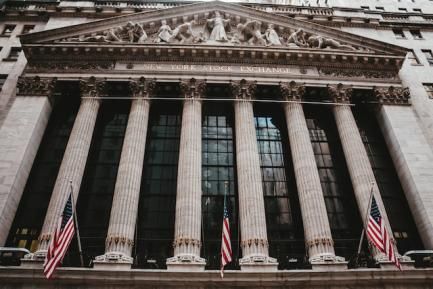The movement of money, securities... and sentiment in the financial markets
«Bull markets are born on pessimism, grown on skepticism, mature on optimism and die on euphoria.» J. Templeton
«Bull markets are born on pessimism, grown on skepticism, mature on optimism and die on euphoria.» The quote belongs to Sir John Templeton, a well-known investor who began his career on Wall Street in 1937 and created some of the most successful international investment funds in the world. In particular, Class A holdings in the Templeton Growth Fund recorded an annualised return of 14.5% between 1954 and 1992,1 compared to the S&P 500’s 10.7% with gross dividends.
Obviously, the words of someone with such a track record could not be forgotten. It is clear that Templeton establishes a relationship between the stock market cycle (boom/bust) and the sentiments of the investment community (pessimism/euphoria) in which investors often take decisions that contradict good reason.
Today, any person or institution interested in the financial markets cannot ignore the mood of investors. So much so that tools have been developed to try to approximate and quantify their pessimism, fear, euphoria and, ultimately, the extent of their risk appetite. In general, these tools give us indices of «investor sentiment», which can be grouped into three categories: surveys, indicators based on aggregate market parameters, and those which follow specific institutional and private investors.
- 1. In those 38 years, it only registered losses in eight of them, with a mean average of –9.1%, while in the remaining 30 years the gains produced a mean of 22.6%.
The most direct way to measure investor sentiment is through surveys in which respondents are asked what they think about the market’s direction (bullish, bearish, or neutral, usually).2 It is important to note that this opinion may or may not be backed up by money. In other words, its value is relative, since it is easier to state an opinion than to back it up by taking action with money.
Some of the best-known surveys are those conducted by Investors Intelligence or the American Association of Individual Investors (AAII), both in the US. In Europe we have the State Street Investor Confidence Index (ICI), based on the asset allocation structure of institutional investors. How are they used? The most common approach is to monitor absolute values, particularly the gap between investors with a bullish and bearish outlook, either as a differential between the two or expressed as a ratio (bull/bear). For example, the first chart shows the bull/bear ratio according to Investor Intelligence, which indicates that optimism is currently high, but not extreme.
- 2. In financial market jargon, bulls expect the market to rise, while bears expect it to decline.

Another way to measure investor sentiment is to infer it from market behaviour. In particular, composite indicators can be built on the basis of different market parameters and, therefore, the actual supply and demand underpinning them. Some of the major investment banks and specialist financial media do precisely that. Examples produced by the former include the JP Morgan Global Equity Sentiment Indicator (see second chart) and the UBS Investor Sentiment Survey. As for the latter, we can mention the CNN Money Fear & Greed Index or the weekly Barron’s Market Lab. To cite some of the parameters they use, it is common for them to consider a measure of price volatility (such as the VIX), the number of listed shares that reach 52-week highs compared to those that reach lows in the same period, the volume of shares traded up versus those traded down, risk premiums between high-quality and low-quality corporate bonds, the percentage of liquidity in institutional investors’ portfolios, volumes traded in call options versus put options, etc.

Finally, a third set of sentiment indicators focuses on looking at who is buying and selling and what volumes are being traded. In this case, it is possible to discriminate between the behaviour of institutional investors and that of individuals. Monitoring the investment volumes of institutional and private investors, as well as how they move in relative terms between them, gives us invaluable information on the sustainability of underlying market trends. This is because the former have a greater capacity for analysis and to anticipate emerging trends, as well as trading much bigger volumes, whereas the latter lack those strengths and tend to increase their presence in the market when the bullish trend is already very mature.
In fact, there is plenty of evidence to show that individual investors tend to take positions when trends have already almost run their course. For instance, the data show how, a few months before a stock market peak is reached, individual investors tend to considerably increase their investment positions, while conversely, shortly before a minimum is reached, major sell-offs tend to occur.
As for the direct participation of retail investors in the market, it has intensified over the last two years (in the US it has risen by 10 pps, now accounting for 23% of the total volume traded), not only in the direct purchase of shares but also in the purchase of financial options. Moreover, social media and the emergence of trading platforms that also act as social networks may have accentuated the gregarious behaviour of retail investors.
Indicators help us identify two extreme situations. The first is a situation of very high euphoria, characterised by excessively optimistic sentiment and the conviction that the market will rise much more, with a high risk appetite among investors. Whilst it may seem advantageous to continue to fuel the rise in prices, in practice this situation usually occurs in the final stage of a bull market. On the opposite end of the spectrum we find a situation marked by excessive pessimism, in which sentiment is tremendously negative, there seems to be no bottom to the market in sight and there is no appetite for risk (it flees the market, selling at any price). Such a situation is typical of the end of a bear market.
Having said that, some clarification is needed. Firstly, these extremes of sentiment are not so frequent and the various indicators we have mentioned usually move within an intermediate range. Secondly, history indicates that signs of «excessive pessimism» are more effective than those of «very high euphoria». In other words, the market is more likely to continue to rise for an unforeseeable period when driven by very high euphoria than it is to continue to decline when there is extreme pessimism. Finally, it is not advisable to take the temperature of the markets using only the various indicators discussed above. Rather, the analysis should be completed with other elements from the macro sphere, the purely market sphere (stock market valuations or risk premiums) and, of course, the strictly corporate sphere (the outlook for revenues, earnings, etc.).
While the various indicators obviously do not coincide, and neither is there any reason why they should, we can say that, in general, they are shifting from an excessively bullish and therefore worrying situation to another in which optimism persists but is moderating. A priori, this is an encouraging sign in that it alleviates the risk of excess in the current environment, which is marked by rather high stock valuations in some areas and a positive macro outlook, but in which relatively high levels of uncertainty still persist.

